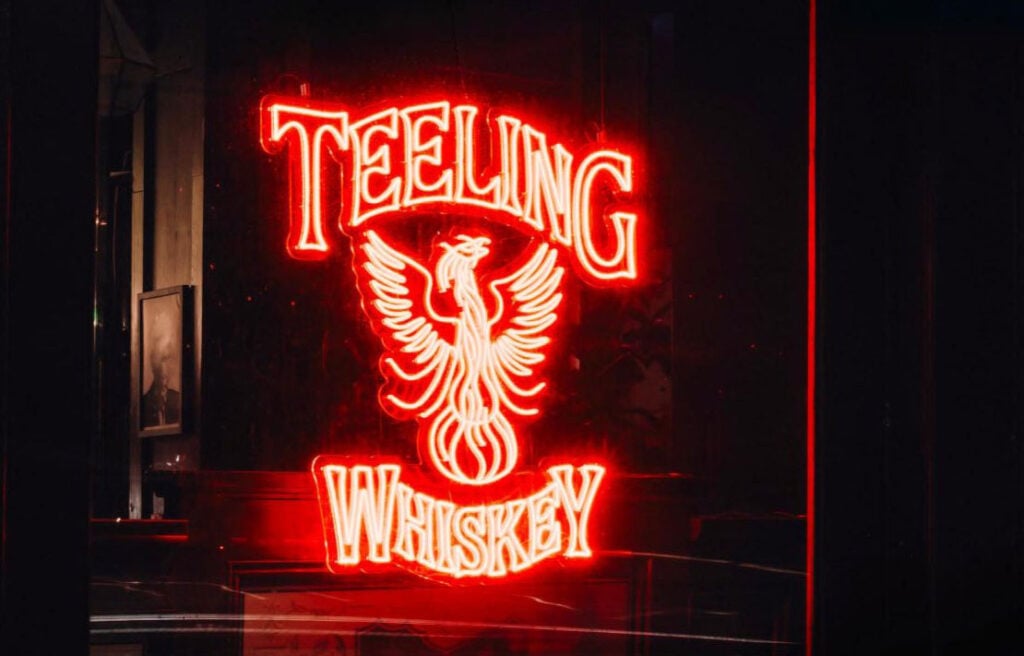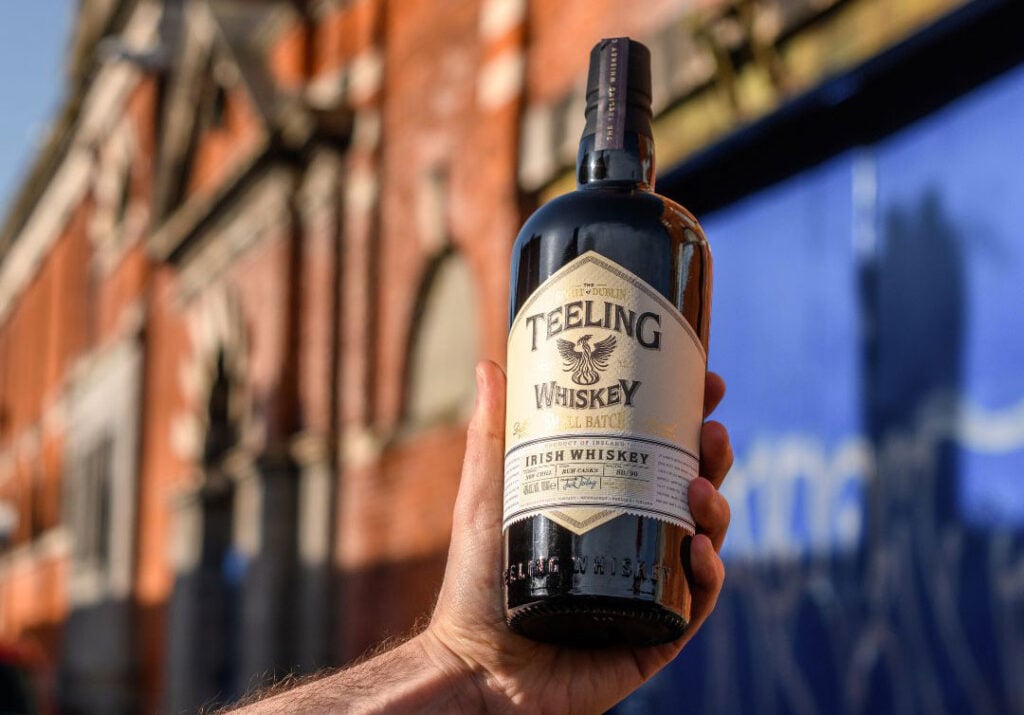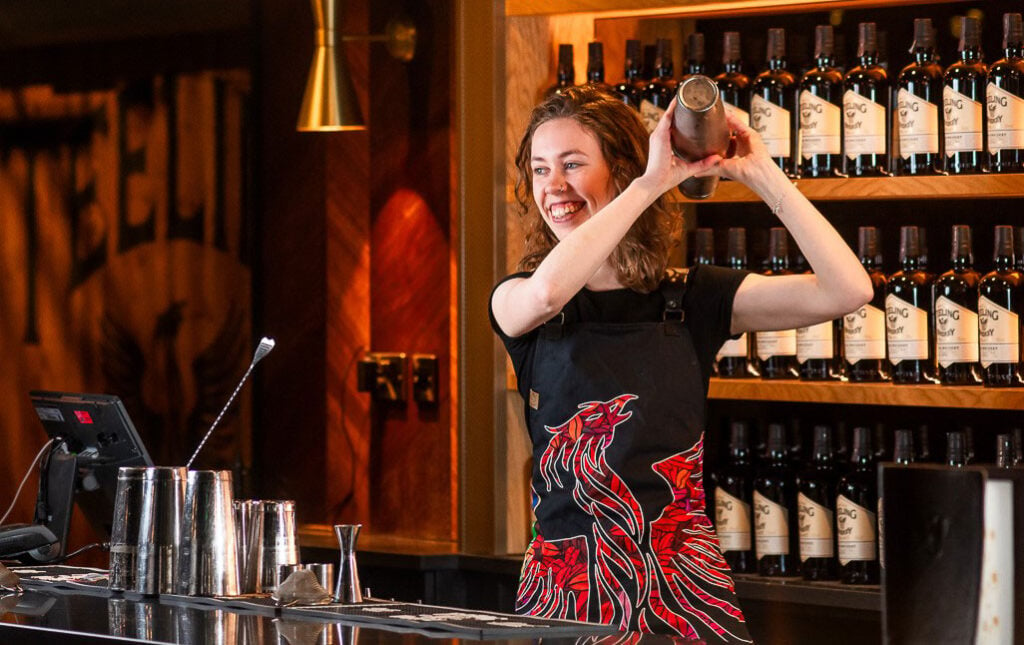The recent Spirits Business Awards 2025 named Teeling as the Whiskey Brand of the Year.
The ceremony, held on Thursday, 13 November, gave awards out across five categories: Retail & Marketing, Sustainability & Innovation, Product & Brand, Culture & Tourism, and People. Sponsors included us, and we were delighted to see that the Bar of the Year (the one with our name on it) was won by the fabulous Viajante87 in Notting Hill. If you love Tequila, mezcal, and Latin American vibes, get yo asses down there.
We’re also fans of Teeling, and so we were chuffed to see them bag such a prize. You may have also noticed that in the recent IWSC Top 50 Spirits table, Teeling came 20th. This is a brand having a good time of it. But why do people love this Irish whiskey maker? Let’s take a look at what it takes to become an award-winner.

Teeling stands out in a crowded whiskey market
Teeling: Whiskey Brand of the Year 2025
First, here’s what The Spirit Business had to say about the winner of the Whisky/Whiskey Brand of the Year (sponsored by Tipple):
“This was seriously competitive, and there could only be one winner. Teeling blew the judges away for having it all: fantastic whiskeys, a focus on social sustainability and a thriving visitor centre. Is there anything Teeling can’t do?”
Three pillars of success are outlined there. How Teeling makes whiskey*, its green credentials, and why it’s a leader in whiskey tourism. To understand why it’s a winner, we need to look at each element.

A great whiskey starts with a great production process
How Teeling makes its whiskey
First, you can’t be a gold medal whiskey brand without creating a fine whiskey. Teeling runs a three-tonne mash seven days a week, producing around half a million litres of pure alcohol each year from Irish-grown malt, grain, pot still spirit, and even rye. Spent draft goes to cattle feed or becomes syrup for the distillery bar, and sustainability shows up in projects such as replanting oak in Wicklow. A wet malt mill keeps dust down and lets the team tweak grinds for each grain variety with minimal fuss.
Roughly a third of production is given over to experiments, backed by a flexible setup that blends heritage and modernity. Fermentation begins with two days in Oregon pine before shifting to stainless steel for at least five, with distillers’ yeast working alongside white wine yeast to boost esters. Distillation takes place in three Frilli-built stills that deliver an 80 to 88% ABV new make through triple distillation, although double distillation plays a role when the distillery wants to preserve weightier profiles.
Maturation happens in Greenore, where casks sit upright in a maritime climate that shapes steady, characterful ageing. Teeling leans into Ireland’s cask freedom, using everything from mizunara and chestnut to amburana, which tastes uncannily like liquid carrot cake. The result is a distillery that avoids a rigid house style and instead embraces a fluid flavour DNA, proving that its whiskies can swing from classic Irish fruitiness to full-bodied, convention-defying richness.

It’s not just what’s inside. Even the bottle is impressive.
Teeling and sustainability
You’ll notice we’ve already touched on sustainability, as Teeling puts it at the centre of its operation and treats it as a moving target rather than a tick box exercise. Packaging gets lighter, ingredients get greener, and production practices evolve with every tweak. For example, rain harvesting and an on-site well reduce water use.
The Dublin site recently gained solar panels that cover close to a third of its electricity needs, and the rooftop garnish garden feeds both cocktails and half a million bees that produce the distillery’s own honey. Efforts extend into the bottle, too. The glass is 75% recycled and fully recyclable. Teeling also works within the Origin Green framework, sourcing barley from fellow certified producers to keep sustainability consistent from field to still.
Social sustainability receives the same attention, with long-running collaborations that support local makers, from brewers and chocolatiers to crisp and seafood producers. Community projects, reforestation initiatives, and charity partnerships… Teeling’s definition of responsibility stretches beyond the whisky in the glass.

Teeling’s visitor experience is acclaimed
Teeling and its visitor centre
The brand has come a long way. It broke new ground as the first whiskey distillery to open in Dublin in more than 125 years in 2014. Sitting pretty in The Liberties, where the industry once thrived, the location had potential. Making that promise count is another thing altogether. The distillery has become as much a place for people to experience Irish whiskey as it is a factory where it’s made. And its doors are always open for anyone keen to tour, taste, or nab a distillery exclusive.
The visitor experience has earned glowing praise, with reviewers calling out the knowledgeable guides, the clear window into a working distillery, and the generous tasting options. Flights, cocktails, and classic warm Irish hospitality make it both educational and fun. A 4.8 rating across more than 5,000 reviews on TripAdvisor suggests the formula works.
Before the pandemic, the site drew around 100,000 visitors a year. New tourism figures from the IWA showed that Ireland’s distilleries attracted a total of 1,010,261 visitors for the year to June 2025, a 23% increase on 2024. Things feel back on track, and Teeling is poised to reap the benefits. You’ll notice when you take the tour that it doesn’t bother weighing you down with the long and complicated history of Irish whiskey.
Teeling seems far more interested in making fresh history of its own.
You can buy Teeling Irish Whiskey from Master of Malt.
*The full production process is outlined in an earlier article on our blog.
